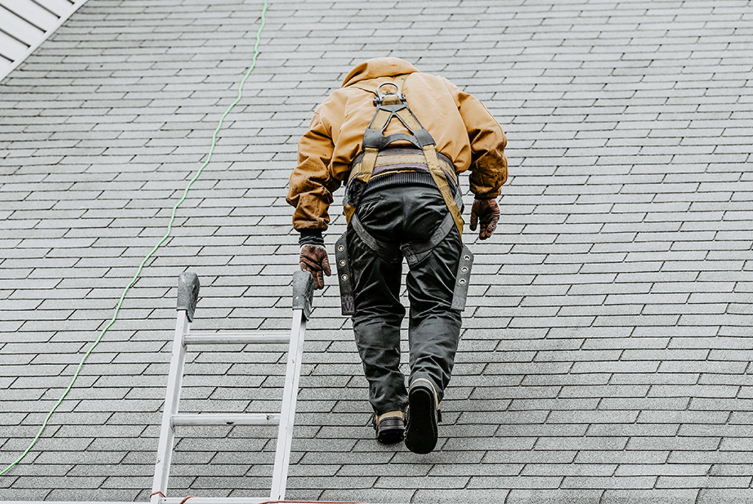
Winter Roof Damage: How Snow and Ice Can Cost You Thousands
When the temperatures drop and snow starts to fall, your home becomes your cozy haven. But while you’re sipping hot cocoa and enjoying the wintery view, your roof might be silently suffering under the weight of snow and ice. Winter roof damage is more common—and more expensive—than many homeowners realize.
Ignoring warning signs or failing to prepare can lead to costly repairs, safety hazards, and even long-term structural issues. In this post, we’ll break down how snow and ice damage your roof, how much it can cost you, and what steps you can take to protect your investment. Whether you’re a new homeowner or a seasoned pro, this guide is a must-read for surviving the cold months without breaking the bank.
Why Winter Weather Is a Threat to Your Roof
Let’s face it—your roof takes the brunt of every storm. But winter is especially harsh. The combination of freezing temperatures, heavy snowfall, and ice buildup creates a perfect storm (pun intended) for roofing problems. Here’s how:
1. Snow Load Adds Excess Weight
Every inch of snow that piles up on your roof adds weight. While most roofs are built to handle some accumulation, a heavy snowstorm can add thousands of pounds of pressure. Over time, this excess weight can weaken the structural integrity of your roof and lead to sagging or even collapse in extreme cases.
2. Ice Dams Trap Moisture
Ice dams form when the snow on your roof melts, flows down, and refreezes near the eaves. This ice barrier prevents proper drainage, and the water behind it can seep under your shingles and into your home. The result? Water stains, mold growth, peeling paint, and sometimes even ruined insulation or drywall.
3. Freeze-Thaw Cycles
Water from melted snow seeps into tiny cracks and gaps in your roof, then freezes again overnight. As the water expands when it turns into ice, it forces the cracks to grow larger. Over time, this repeated cycle weakens shingles, flashing, and other roofing materials, making your roof vulnerable to leaks and drafts.
4. Blocked Gutters
Clogged or frozen gutters prevent water from draining off your roof properly. When that water backs up, it can sneak under shingles or overflow and damage your home’s siding and foundation. Gutters full of ice also add weight, which can tear them away from your home entirely.
The Real Cost of Winter Roof Damage
You might think a few icicles or a little leak is no big deal—but winter roof damage can be surprisingly expensive. Here’s a breakdown of what those costs can look like:
-
Ice dam removal: $300 to $600 (or more) per incident
-
Water damage repair: $1,000 to $10,000 depending on severity
-
Roof repair or partial replacement: $500 to $5,000
-
Full roof replacement: $8,000 to $25,000+ depending on size and material
-
Mold remediation: $2,000 to $6,000
And let’s not forget the hidden costs—like higher heating bills from poor insulation or time spent filing insurance claims.
How to Prevent Winter Roof Damage
The good news? You don’t have to be a roofing expert to keep your home safe. Just a few proactive steps can go a long way toward avoiding big bills and headaches later on. Here’s how to protect your home this winter:
1. Schedule a Pre-Winter Roof Inspection
Before the snow hits, get your roof professionally inspected. Companies like PACE Home Solutions offer expert roof evaluations that identify issues like missing shingles, cracked flashing, or clogged gutters before they become winter disasters.
2. Clear Snow Promptly
Use a roof rake to gently remove snow buildup after a heavy storm, especially along the edges of your roof. Avoid climbing up there yourself; the last thing you need is a fall on an icy roof.
3. Improve Attic Insulation and Ventilation
Poor attic insulation is a common cause of ice dams. When heat escapes from your living space into the attic, it melts the snow on your roof. Good insulation keeps the heat where it belongs—inside your home. Proper ventilation also allows warm, moist air to escape, keeping your attic cooler and drier.
4. Install Heat Cables
Electric heat cables can be installed along the edge of your roof to melt snow and prevent ice dams. This is especially helpful if your roof has a low pitch or trouble spots that always seem to ice up.
5. Keep Gutters Clean
Clean your gutters in late fall to remove leaves and debris. Consider installing gutter guards to make the job easier. And if your gutters tend to freeze, a gutter heating system may be worth the investment.
6. Seal and Caulk Roof Penetrations
Seal areas where pipes, vents, or chimneys pass through your roof. These spots are especially prone to leaks during freeze-thaw cycles. A proper sealant job can prevent water from sneaking in and causing damage.
How PACE Home Solutions Can Help
Dealing with winter roof problems isn’t just stressful—it can feel overwhelming. That’s where PACE Home Solutions comes in. With years of experience in roofing and home maintenance, they offer reliable, affordable, and fast services designed to protect your home through every season.
Their team can help with:
-
Winter roof inspections
-
Emergency repairs
-
Ice dam removal
-
Attic insulation upgrades
-
Gutter cleaning and protection
-
Full roof replacements (if needed)
What sets PACE Home Solutions apart? It’s their customer-first approach. They don’t just fix problems—they help homeowners prevent them.
Whether you’re facing a minor leak or want to get ahead of winter, PACE Home Solutions makes it easy to protect your investment without the hassle.
When to Call a Professional
You don’t need to wait until water is dripping from your ceiling to call in help. If you notice any of the following signs, it’s time to bring in a pro:
-
Water stains on ceilings or walls
-
Icicles hanging from your gutters
-
Uneven snow melt on your roof
-
Sagging gutters or rooflines
-
Unusually high energy bills
Even if things seem okay, remember: a small issue in December can become a major repair in February. Catching problems early saves time, money, and stress.
Final Thoughts
Your roof works hard to keep your home warm and dry all winter long. Don’t let snow and ice sneak in and cause thousands of dollars in damage. With a little preparation and the right help from PACE Home Solutions, you can keep your roof—and your wallet—safe this winter.
Winter is beautiful, but it’s also brutal. So stay cozy inside, but don’t forget to give your roof a little love before the snow starts falling.
FAQs
1. How can I tell if my roof has been damaged by ice or snow?
Look for signs like ceiling stains, icicles on the edge of your roof, water leaks, peeling paint, or mould in your attic. If you’re unsure, a professional inspection from a company like PACE Home Solutions can give you peace of mind.
2. Are ice dams covered by homeowners’ insurance?
In many cases, yes—if the ice dam causes water damage inside your home. However, coverage depends on your policy. It’s smart to check with your insurance company and document any damage as soon as it happens.
3. How often should I clean my gutters in winter?
Ideally, clean them at the end of fall and check them monthly during the winter, especially after heavy snow. If your gutters tend to freeze, consider installing heating cables or calling PACE Home Solutions for professional maintenance.





